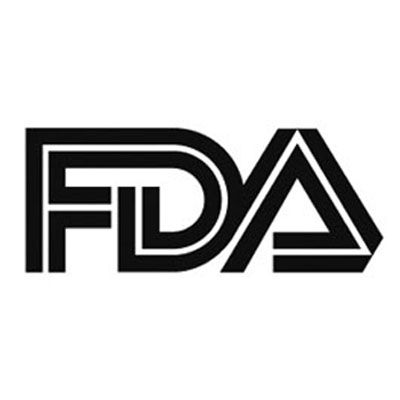FDA Grants Emergency Use Authorization to First Vaccine for COVID-19 Prevention
The FDA granted the first Emergency Use Authorization to the vaccine, BNT162b2, for the prevention of COVID-19, which allows for the vaccine to be distributed in the United States for individuals who are at least 16 years or older.

The FDA has granted the first Emergency Use Authorization (EUA) to the vaccine, BNT162b2, for the prevention of coronavirus disease 2019 (COVID-19), which allows for the vaccine to be distributed in the United States for individuals who are at least 16 years or older, according to a press release from the FDA.1
Pfizer and BioNTech, co-developers of the vaccine, are gathering additional data, preparing to file a planned Biologics License Application for a potential full regulatory approval of the vaccine in 2021, with the FDA. The allocation and distribution of the vaccine in the United States will be managed by the Department of Defense in partnership with agencies within the Department of Health and Human Services, including the Centers for Disease Control and Prevention (CDC), under Operation Warp Speed. The CDC’s Advisory Committee on Immunization Practices guidelines will identify populations that will be prioritized to receive the vaccine.2
“I'm hopeful [the vaccine] will impact my practice favorably, and I'm hopeful that most, if not everyone, will agree to receive the vaccine.. I think the 1 unknown is in cancer patients who may have a slightly compromised immune system, similar to the flu, will [the vaccine] be as effective? Hopefully, it will only help, and it'll help staff, it'll help patients, and it'll just be an extra comorbidity that we have to worry about.,” Andrew M. Evens, DO, MSc, of the Rutgers Cancer Institute of New Jersey, told Targeted Oncology in an interview.
The Pfizer-BioNTech COVID-19 vaccine met statutory criteria to receive the EUA, and the totality of available data demonstrate clear evidence supporting its effectiveness in the prevention of COVID-19. These data are also supportive in that the known and potential benefits outweigh the known and potential risks.1
Findings from the pivotal phase 3 clinical trial (NCT04368728) exploring this vaccine were released previously for 43,448 participants. These data indicated a 95% efficacy rate for COVID-19 prevention in participants who did not have a prior infection 7 days or more following the second vaccination dose, and the vaccine was generally well tolerated. The efficacy was consistent for the overall population across a number of subsets that were evaluated, including age, gender, race, ethnicity, baseline body mass index, or the presence of other underlying comorbidities.
Participants in the study were randomized 1:1 to receive either the vaccine or placebo. The observer-blinded trial aimed to collect data on the safety, immune response, and efficacy necessary for regulatory review. The co-primary end points of the study are the prevention of COVID-19 among those who have not been infected by SARS-CoV-2 before receiving the vaccine and the prevention of COVID-19 regardless of prior infection. The secondary end points include prevention of severe COVID-19 in both of these groups, and an exploratory end point includes the prevention of infection by SARS CoV-2, the virus known to cause COVID-19.
Among 36,532 participants without evidence of an existing or prior infection at the time of vaccination, a total of 170 COVID-19 infections were observed with onset occurring at least 7 days following administration of the second dose, and of these cases, 8 occurred in patients who received the vaccine whereas 162 were in those who had received placebo. This translated to a 95.0% vaccine efficacy (95% CI, 90.3-97.6).3
Among participants with and without evidence of a previous SARS-CoV-2 infection, a COVID-19 infection occurred in 9 participants who had received the vaccine versus 169 who received placebo, which translated to a 94.6% vaccine efficacy (95% CI, 89.9-97.3).
The cumulative incidence of COVID-19 cases began to separate by 12 days after administration of the first dose in both arms. A 54.4% vaccine efficacy was observed between dose levels 1 and 2, indicating early onset as a partially protective effect with the vaccine. Maximum protection was reported at 2 doses with the vaccine.
The safety profile appeared favorable among 37,706 participants who were available for safety analysis at a median of 2 months. The most frequently reported side effects were transient or mild-to-moderate pain at the site of injection, fatigue, and headache, but these toxicities were typically resolved within 2 days.
The study has enrolled more than 44,000 participants to date, and the majority of these patients have received their second dose of the vaccine. The study has enrolled participants at approximately 150 clinical sites in the United States, as well as Germany, Turkey, South Africa, Brazil, and Argentina.
In the coming months, more data will be gathered and evaluated for this study, including longer-term safety, comprehensive information on the duration of protection, efficacy against asymptomatic SARS-CoV-2 infection, and safety and immunogenicity in adolescent participants aged 12 to 17 years. There are additional studies in the works to explore this vaccine in pregnant women, as well as children under the age of 12 years and people in special risk groups, such as those who are immunocompromised.
References
1. FDA takes key action in fight against COVID-19 by issuing emergency use authorization for first COVID-19 vaccine. News Release. FDA. December 11, 2020. Accessed December 14, 2020. https://bit.ly/37kzg7r
2. Pfizer and BioNTech celebrate historic first authorization in the U.S. vaccine to prevent COVID-19. News Release. Pfizer. December 11, 2020. Accessed December 14, 2020. https://bwnews.pr/2WhjXGd
3. Pfizer and BioNTech announce publication of results from landmark phase 3 trial of BNT162b2 COVID-19 vaccine candidate in the New England Journal of Medicine. News Release. December 10, 2020. Accessed December 14, 2020. https://bit.ly/2WeDJC5
2 Commerce Drive
Cranbury, NJ 08512
All rights reserved.